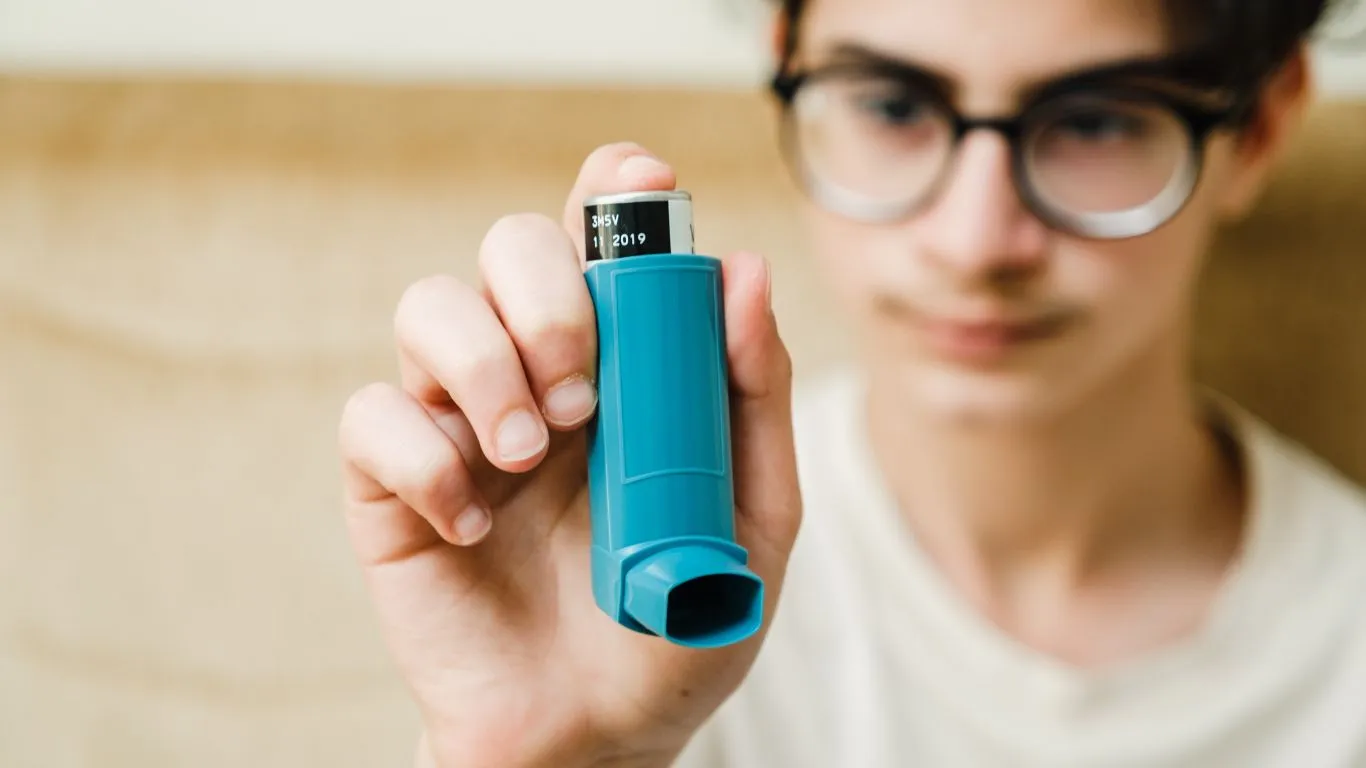Deep breathing techniques for asthma relief that actually work
If you’ve ever struggled to catch your breath during an asthma flare-up, you’re definitely not alone. As a pulmonary nurse practitioner, I’ve seen how something as simple as deep breathing techniques for asthma relief can truly change the game for patients. These aren’t just relaxation tools—they’re practical, effective strategies you can use every day to help manage your symptoms and improve your lung health. I’ve used them myself when anxiety hits or when I’m teaching a new patient how to stay calm and breathe through the chaos. And trust me, learning to breathe correctly is more powerful than most people realize.
Why Deep Breathing Matters for Asthma Management

Let’s start with the basics. Asthma is a chronic respiratory condition where your airways become inflamed and narrow, making it harder to breathe. That wheezy, tight-chest feeling? It’s your body struggling to get enough air. That’s where deep breathing techniques come in—they help open up those airways and bring in more oxygen while calming your nervous system.
From my clinical experience, I’ve noticed that patients who consistently practice breathing exercises tend to have fewer flare-ups and feel more in control of their symptoms. They’re not just reacting to asthma—they’re actively managing it.
Physiological Benefits of Deep Breathing
There’s real science behind these techniques. Here are a few things that happen when you take a slow, deep breath:
- Reduces airway resistance: Deep breaths expand your lungs more fully, making it easier for air to flow through.
- Triggers relaxation: Your parasympathetic nervous system kicks in, lowering stress hormones that can aggravate asthma.
- Improves oxygen exchange: Breathing deeply means more oxygen enters your bloodstream and more carbon dioxide gets expelled.
I had a patient once—let’s call him James—who used to panic every time he felt a flare coming on. Through guided deep breathing, we helped him shift that fear into focused breathing, and his emergency visits dropped dramatically.
Best Deep Breathing Techniques for Asthma Relief

1. Diaphragmatic Breathing (aka Belly Breathing)
This one’s a staple in my toolkit, both professionally and personally. Diaphragmatic breathing helps strengthen the diaphragm, improve lung efficiency, and reduce the work of breathing. It’s especially helpful during an asthma attack or right before bed to prevent nighttime symptoms.
- Sit or lie down in a relaxed position.
- Place one hand on your chest and the other on your belly.
- Inhale through your nose for 4 seconds, making sure your belly (not your chest) rises.
- Exhale slowly through pursed lips for 6 seconds.
- Repeat for a few minutes daily.
Pro tip from Bianca: Try this while listening to calm music or in a warm bath—your body will respond even better when you’re relaxed.
2. Pursed-Lip Breathing
This technique is especially great during physical activity or when you’re short of breath. It helps control your exhale and keeps your airways open longer.
- Breathe in through your nose for about 2 seconds.
- Purse your lips as if you’re blowing out a candle.
- Exhale slowly and evenly for 4 seconds through your pursed lips.
This one’s a go-to for my patients who feel anxious or panicked during exertion. It slows things down and makes them feel more in control.
Making Breathing Exercises a Daily Habit

Like any healthy habit, consistency is everything. I usually recommend my patients set aside 5–10 minutes a day to practice. First thing in the morning or before bed tends to work best. Some even link it to brushing their teeth—breathe while brushing, why not?
- Use reminders: Set a timer or use a breathing app (there are tons of good ones out there).
- Pair it with routines: Combine it with stretching, journaling, or your skincare ritual.
- Track your progress: Jot down your symptoms and how you feel post-exercise—it helps reinforce the benefits.
Once you start incorporating these techniques, you might notice less wheezing, improved focus, and even better sleep. It’s subtle at first, but the cumulative effects can be pretty amazing. I’ve had patients tell me they feel “freer,” like they’ve got more space in their chest. And honestly, that’s one of the best compliments I can hear as a provider.
Real-Life Success Stories with Deep Breathing Techniques

Let me share a couple of stories that always stick with me. One of my long-time patients, Carla, used to rely heavily on her rescue inhaler—sometimes three or four times a day. We worked together to incorporate deep breathing techniques for asthma relief into her routine. Just a few weeks in, she was down to using her inhaler maybe once a week. She told me, “I didn’t think breathing could do so much—but it’s like I’ve got this secret weapon now.”
Another favorite is Sam, a teenager who struggled with sports due to his asthma. We practiced breathing drills together—especially box breathing before games—and not only did his stamina improve, but his confidence soared. Now he’s the one showing his teammates how to do it. Moments like that remind me why I love this work so much.
Why Consistency Trumps Intensity
There’s a common misconception that you need to spend 30 minutes in deep meditation to get any benefit from breathing exercises. Nope! Even 3-5 minutes a day can bring noticeable results if you’re consistent. It’s kind of like brushing your teeth—you don’t skip it just because you’re short on time, right?
And don’t worry if it feels awkward at first. A lot of people breathe shallowly without realizing it, especially if they’re used to managing asthma by reacting rather than being proactive. But once your body gets used to the rhythm, it becomes second nature.
Tools and Apps That Can Help You Get Started

We live in a world where there’s an app for everything—and breathing is no exception. While good old-fashioned focus and a quiet space are all you really need, some tools can make it easier to stay motivated and on track.
- Breathe+ Coherence Breathing: Great for visual learners who like real-time feedback on breathing rates.
- MyLife Meditation: Combines mindfulness with breathing cues and journaling prompts.
- Insight Timer: Tons of free guided breathing and relaxation sessions.
I’ve had patients tell me that using these apps helped them stick to a routine because it felt more like a challenge or game than a chore. Whatever gets you going, use it!
Creating a Breathing-Friendly Environment
One tip I give my patients all the time is to make their surroundings work for them. Deep breathing is way more effective when you’re in a calm, clean space—especially for those with environmental triggers like dust or pet dander.
- Keep air purifiers running in your bedroom or living space.
- Use calming scents like lavender or eucalyptus (unless they trigger your asthma—always test first!).
- Create a small “breathing zone”—a cozy chair, dim light, maybe some soft music.
One of my patients even turned a corner of their office into a mini relaxation nook—bean bag, diffuser, and all. They take two “breathing breaks” during the workday now and say they’ve had fewer midday asthma symptoms as a result.
Deep Breathing Techniques for Asthma Relief During Flare-Ups

Alright, let’s talk about when things get tough—flare-ups. It’s scary, right? That tightening chest, the panic, that scramble for your inhaler. But here’s the thing: your breathing technique can help calm the storm, even in those moments.
Emergency Breathing Drill: 4-6-8 Method
This one’s simple and incredibly grounding. I teach it to almost every new asthma patient I see.
- Inhale through your nose for 4 seconds.
- Hold your breath for 6 seconds.
- Exhale through pursed lips slowly for 8 seconds.
It slows your breathing, reduces panic, and gives your lungs a chance to recover. I’ve seen people go from full-blown distress to calm control with just a couple of rounds.
Note: Always pair this with your prescribed medication if you’re in an active attack—breathing exercises are not a replacement during emergencies, but a helpful support.
What to Avoid During a Flare
Sometimes, people unknowingly make things harder for themselves. Here are a few habits to ditch:
- Gulping air: This actually increases anxiety and can make you feel lightheaded.
- Holding your breath too long: It might feel natural during panic, but it decreases oxygen flow.
- Breathing through the mouth: Try to stick to nose breathing unless you truly can’t—it warms and filters the air better.
I can’t tell you how many times I’ve walked patients through this—sometimes even over the phone during an episode—and just that focused, intentional breathing makes a huge difference.
In the next section, we’ll dive into how to combine deep breathing with other holistic tools like yoga and meditation to create a well-rounded approach to asthma care. But for now, if all you do today is pause, take a breath, and remind yourself you’ve got tools—that’s a win.
Combining Deep Breathing with Holistic Asthma Support

By now, you’ve probably realized that deep breathing techniques for asthma relief aren’t just a feel-good suggestion—they’re a legit part of a well-rounded asthma management plan. But here’s where it gets even better: when you combine deep breathing with other holistic tools like gentle yoga, mindfulness, and lifestyle adjustments, you create a solid foundation for long-term lung health.
Let’s be real—no one wants to feel like their asthma is running the show. These tools help you take the wheel. One of my patients, Anna, started practicing deep breathing during her morning yoga flow. Just 10 minutes a day, nothing fancy. Within a month, she noticed fewer symptoms and way more energy. Plus, she said she felt “lighter,” which is a word I hear often when folks get into this groove.
Yoga-Based Breathing (Pranayama) for Asthma
Don’t let the Sanskrit scare you—pranayama just means “breath control,” and there are some truly asthma-friendly techniques out there. The gentle movements and stretches in yoga help open the chest and diaphragm, and when paired with mindful breathing, the combo is magic.
- Nadi Shodhana (Alternate Nostril Breathing): This one balances the nervous system and improves oxygenation.
- Ujjayi Breathing (“Ocean Breath”): A slow, controlled exhale that calms the mind and reduces shortness of breath.
- Seated forward folds: These help relax the neck and upper back muscles, where many asthma sufferers carry tension.
I usually recommend starting with a certified yoga therapist—especially one familiar with chronic conditions. Look for gentle or restorative yoga classes. No need to jump into hot power yoga, I promise.
What You Eat and How You Breathe Are More Connected Than You Think

This might surprise some people, but nutrition plays a key role in respiratory health. When I’m working with asthma patients, we almost always touch on diet. Why? Because inflammation is at the root of asthma, and food can either fuel it or fight it.
- Anti-inflammatory foods: Think leafy greens, berries, salmon, turmeric, and ginger.
- Hydration: Drinking enough water keeps mucus thin and easier to clear from the lungs.
- Avoiding triggers: Some people are sensitive to sulfites, processed foods, or dairy—keeping a food journal can help pinpoint issues.
Pairing these habits with your deep breathing routine strengthens your entire respiratory system. One complements the other. It’s not about overhauling everything at once—just make one change at a time, and you’ll start to notice a difference.
The Role of Mental Health in Asthma Control
Here’s something we don’t talk about enough—anxiety and asthma are often best friends, and not in a good way. I’ve had so many patients who experience more flare-ups during stressful times. It makes sense, right? Stress tightens muscles, messes with sleep, and disrupts normal breathing patterns.
That’s why mindfulness, guided meditation, and simple breathing check-ins throughout the day can be so impactful. Even just pausing to take three slow, deep breaths when you’re stuck in traffic or about to step into a meeting can retrain your nervous system to stay cool under pressure.
As someone who’s worked in critical care and outpatient settings, I can’t overstate how often I see this connection—and how often it’s overlooked. Addressing your mental and emotional health isn’t just helpful for asthma; it’s essential.
Where to Learn More
Building a solid, evidence-based approach to asthma self-care doesn’t mean figuring it all out on your own. There are amazing organizations and resources that offer up-to-date info, tools, and guidance:
- Asthma and Allergy Foundation of America – Tons of patient-friendly education, tools, and action plans.
- American Lung Association – Excellent for breathing workshops and latest treatment guidelines.
- PubMed – For those who like to dive into clinical studies on breathing techniques, asthma triggers, and beyond.
As always, check in with your primary care provider or pulmonologist before making big changes. Every asthma case is unique, and your care plan should be too.
Final Thoughts from the Nurse’s Corner
If you’ve made it this far, I’m genuinely proud of you. You’re taking your health seriously—and that’s not always easy. My biggest piece of advice? Don’t wait for a flare-up to take control. Start weaving these techniques into your daily life now, and you’ll thank yourself later.
Breathing is something we do all day long, every single day. But when you start doing it with purpose, awareness, and a little guidance, it transforms your entire relationship with asthma. Trust me—I’ve seen it firsthand. And if you’re ever unsure where to begin, just start with one breath. Then another. You’ve got this.
Disclaimer
This article is for informational and educational purposes only and is not a substitute for professional medical advice, diagnosis, or treatment. Always consult with your healthcare provider before starting any new health regimen, especially if you have a chronic condition like asthma.

Bianca Nala is a compassionate Nurse Practitioner with a strong background in primary and respiratory care. As a health writer for Healthusias.com, she combines her clinical expertise with a talent for clear, relatable storytelling to help readers better understand their health. Bianca focuses on topics like asthma, COPD, chronic cough, and overall lung health, aiming to simplify complex medical topics without losing accuracy. Whether she’s treating patients or writing articles, Bianca is driven by a single goal: making quality healthcare knowledge accessible to everyone.






